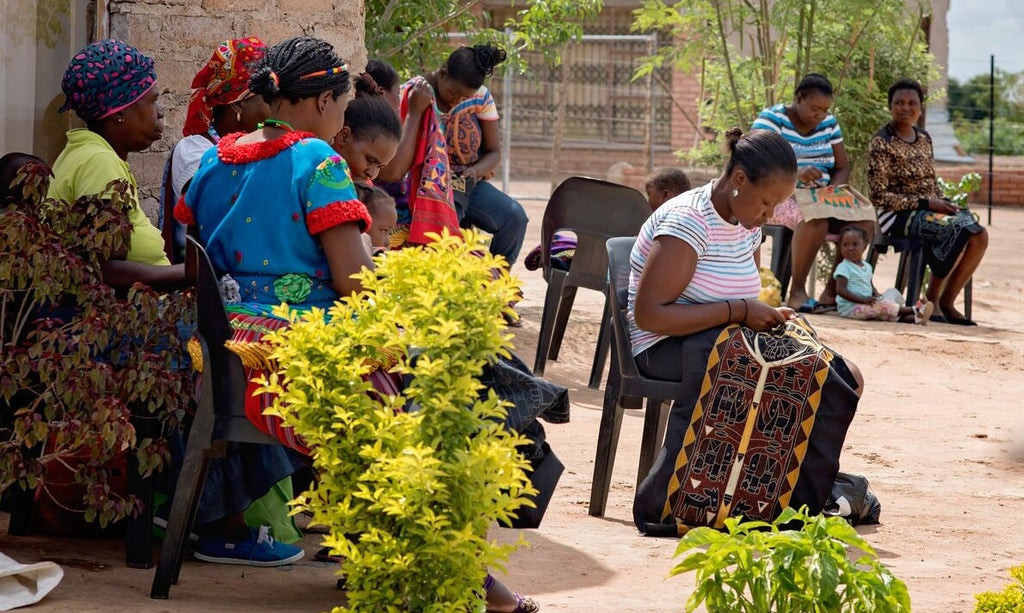We visit the Mashabas, where the art of embroidery is family business

Embroidery is a skill that the VaTsonga people are traditionally good at, but few demonstrate this better than the Mashaba family of Xihoko Village, where the art of embroidery truly runs in the family.
 Matriarch Anna Mashaba (pictured here) started working for Kaross right at the very beginnning in 1993, followed by her daughters Maria in 1996 and Christinah in 1997.
Matriarch Anna Mashaba (pictured here) started working for Kaross right at the very beginnning in 1993, followed by her daughters Maria in 1996 and Christinah in 1997.
Anna had seven children, one whom passed away. Of the remaining six children, four currently embroider for Kaross – Christinah, Esta, Maria and Wisani. Anna is divorced from her husband and stays with Esta, who is also divorced. Christinah is a widow with five children, three still at school and two at university, and is the sole provider for her family.
The Mashaba family are all excellent embroiderers and proud of their work – their work ethic is also reflected in the fact that Kaross is the main source of income for this large family.
Such a community of embroiderers inevitably attracts others, and Anna and Esta’s home has become a central point where all the neighbours who also work for Kaross regularly get together to embroider. We met up with the Mashaba family and their neighbours on one of these festive occasions.

The Mashaba family are proudly VaTsonga people
The majority of the embroiderers who work for Kaross are from the VaTsonga people group, who live mostly in the Limpopo, Mpumalanga, Kwa-Zulu Natal and Gauteng provinces of South Africa.
As with many other South African people groups, the VaTsonga people originally lived in Central Africa hundreds of years ago, before migrating southwards towards the coastal plains of Mozambique, on the north-eastern border of South Africa.
Political and economic events during the 1800s caused many VaTsonga to migrate from Mozambique to an area between what is now known as the Drakensberg and the Kruger National Park, in the Limpopo and Mpumalanga provinces of South Africa.
Their cultural dress is as eye-catching as their embroidery
The VaTsonga culture is rich, varied and vibrant with colour. This is especially in evidence when the women get together in their cultural dress and start dancing – as the Mashaba family did for us on our visit – literally providing a feast for the eyes!
The traditional skirt is called a xibelani. Comprising as much as 18 metres of fabric stitched into dense pleats, it is meant to emphasize the movement of the hips during the traditional dance of the same name.
Another staple of VaTsonga clothing is the nceka (plural minceka) cloth, often handmade, which is worn draped around the body and knotted at the shoulder. Often 2 minceka are worn, one knotted on each shoulder.
As is evident from the photos of our visit to the Mashaba family, the vibrancy and creative use of colour combinations found in the VaTsonga culture and dress, have very successfully translated into the beautiful embroidery these women craft – truly making their work a celebration of their lives!
For more colourful photos of our visit, or to comment on this post, click here.





